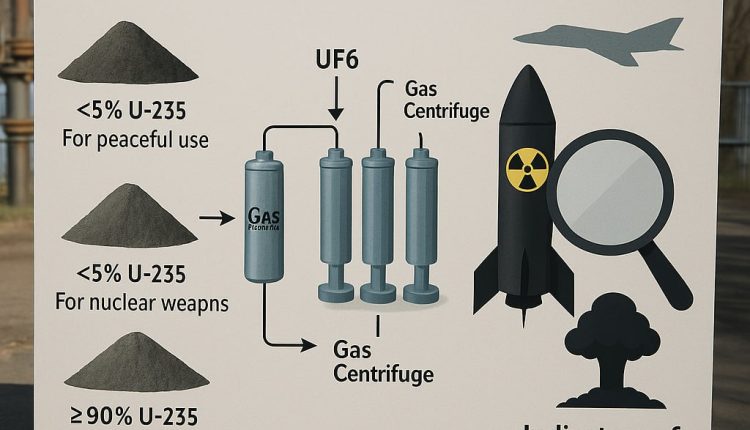Uranium Enrichment and the Secrets of Nuclear Weapons: How is Deterrence Built?
As global tensions rise and the arms race accelerates, the nuclear question once again dominates international discourse. Long shrouded in secrecy and political controversy, nuclear weapons remain the most potent symbol of military deterrence in the modern age. While some states maintain discreet nuclear programs, others openly use them as strategic leverage, signaling strength in a volatile geopolitical landscape.
Understanding how nuclear weapons are made—beginning with uranium enrichment and ending with deployment capabilities—offers critical insight into one of the most complex and secretive domains of modern warfare.
1. What is Uranium Enrichment?
Uranium enrichment is the process of increasing the concentration of uranium-235 (U-235) in natural uranium to make it usable in civilian nuclear reactors—or in nuclear weapons.
Natural Uranium Composition:
-
0.7% U-235: Fissile and suitable for nuclear reactions.
-
99.3% U-238: Not easily fissile.
How Enrichment Works:
-
Conversion: Natural uranium is transformed into uranium hexafluoride gas (UF₆).
-
Centrifuges: The UF₆ gas is spun at extremely high speeds in gas centrifuges, which separate the lighter U-235 from the heavier U-238.
-
Collection: The gas enriched in U-235 is gradually collected through repeated cycles.
Enrichment Levels:
| U-235 Concentration | Use Case |
|---|---|
| < 5% | Civilian nuclear energy |
| ≥ 20% | Highly enriched (potential for weapons research) |
| ≥ 90% | Weapons-grade nuclear material |
2. When Does a Country Officially Have Nuclear Weapons?
Declaring nuclear capability is as much a political decision as it is a technical milestone. A state is generally assumed to possess nuclear weapons if it has:
-
Produced sufficient fissile material (HEU or plutonium).
-
Mastered warhead design and assembly.
-
Successfully conducted at least one nuclear test.
-
Developed reliable delivery systems (missiles, aircraft, submarines).
Some nations opt for strategic ambiguity, refusing to confirm or deny possession—as in the case of Israel, which has never officially declared itself a nuclear-armed state but is widely believed to possess a substantial arsenal.
3. How Can We Tell if a Country Has Nuclear Weapons?
Several types of evidence can signal nuclear capability:
| Evidence Type | Description |
|---|---|
| Open Nuclear Test | Strongest proof; practiced by the US, Russia, China, India, Pakistan, North Korea. |
| Satellite/Intelligence Monitoring | Surveillance of enrichment facilities and weapons development sites. |
| 90%+ Enrichment Capability | A clear technical marker for potential bomb production. |
| Official Statements or Leaks | Such as North Korea’s public declarations. |
| Ballistic Missile Programs | Indicates capacity to deliver nuclear payloads. |
| Refusal to Sign the NPT or Expel IAEA | May indicate intent to develop weapons. |
Key Notes on Nuclear Powers:
-
Official Nuclear-Weapon States (NPT-recognized):
United States, Russia, China, France, United Kingdom. -
De Facto Nuclear States (Non-signatories or withdrawn):
India, Pakistan, Israel, North Korea.
Conclusion: The Science of Deterrence
The nuclear weapons debate isn’t just about power—it’s about perception, credibility, and signaling. Uranium enrichment is the foundation of nuclear capability, but it’s the geopolitical context, testing, and delivery systems that ultimately define a state’s position in the nuclear hierarchy.
While some nations flaunt their power, others hint from behind a veil of ambiguity. What’s certain, however, is that the pursuit of nuclear deterrence remains one of the most tightly controlled and strategically sensitive domains in international relations.

